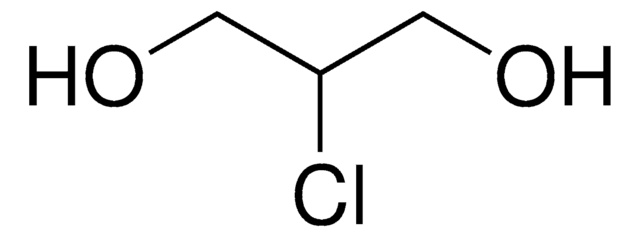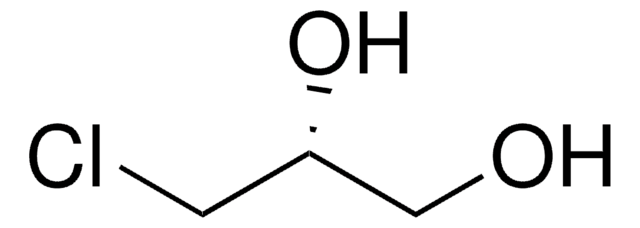36295
2,3-Dichloro-1-propanol
≥97.0% (GC)
Sinonimo/i:
Glycerol-α,β-dichlorohydrin
Scegli un formato
Scegli un formato
About This Item
Prodotti consigliati
Saggio
≥97.0% (GC)
Densità
1.360 g/mL at 20 °C (lit.)
Gruppo funzionale
chloro
hydroxyl
Stringa SMILE
OCC(Cl)CCl
InChI
1S/C3H6Cl2O/c4-1-3(5)2-6/h3,6H,1-2H2
ZXCYIJGIGSDJQQ-UHFFFAOYSA-N
Categorie correlate
Descrizione generale
Applicazioni
Avvertenze
Danger
Indicazioni di pericolo
Consigli di prudenza
Classi di pericolo
Acute Tox. 2 Dermal - Acute Tox. 3 Oral - Eye Irrit. 2
Codice della classe di stoccaggio
6.1A - Combustible acute toxic Cat. 1 and 2 / very toxic hazardous materials
Classe di pericolosità dell'acqua (WGK)
WGK 3
Punto d’infiammabilità (°F)
199.4 °F
Punto d’infiammabilità (°C)
93 °C
Dispositivi di protezione individuale
Eyeshields, Faceshields, Gloves, type ABEK (EN14387) respirator filter
Scegli una delle versioni più recenti:
Possiedi già questo prodotto?
I documenti relativi ai prodotti acquistati recentemente sono disponibili nell’Archivio dei documenti.
I clienti hanno visto anche
Filtri attivi
Il team dei nostri ricercatori vanta grande esperienza in tutte le aree della ricerca quali Life Science, scienza dei materiali, sintesi chimica, cromatografia, discipline analitiche, ecc..
Contatta l'Assistenza Tecnica.










